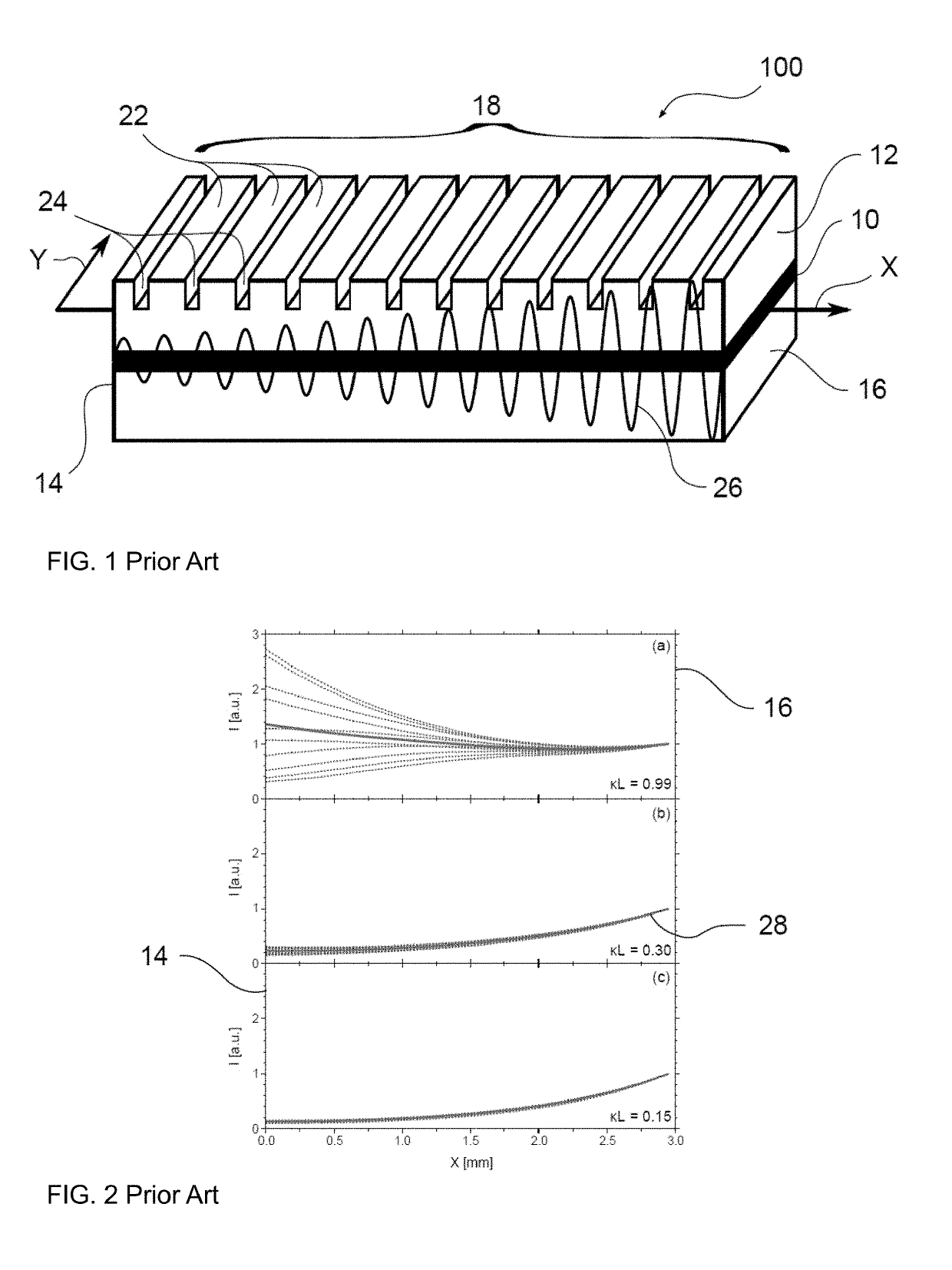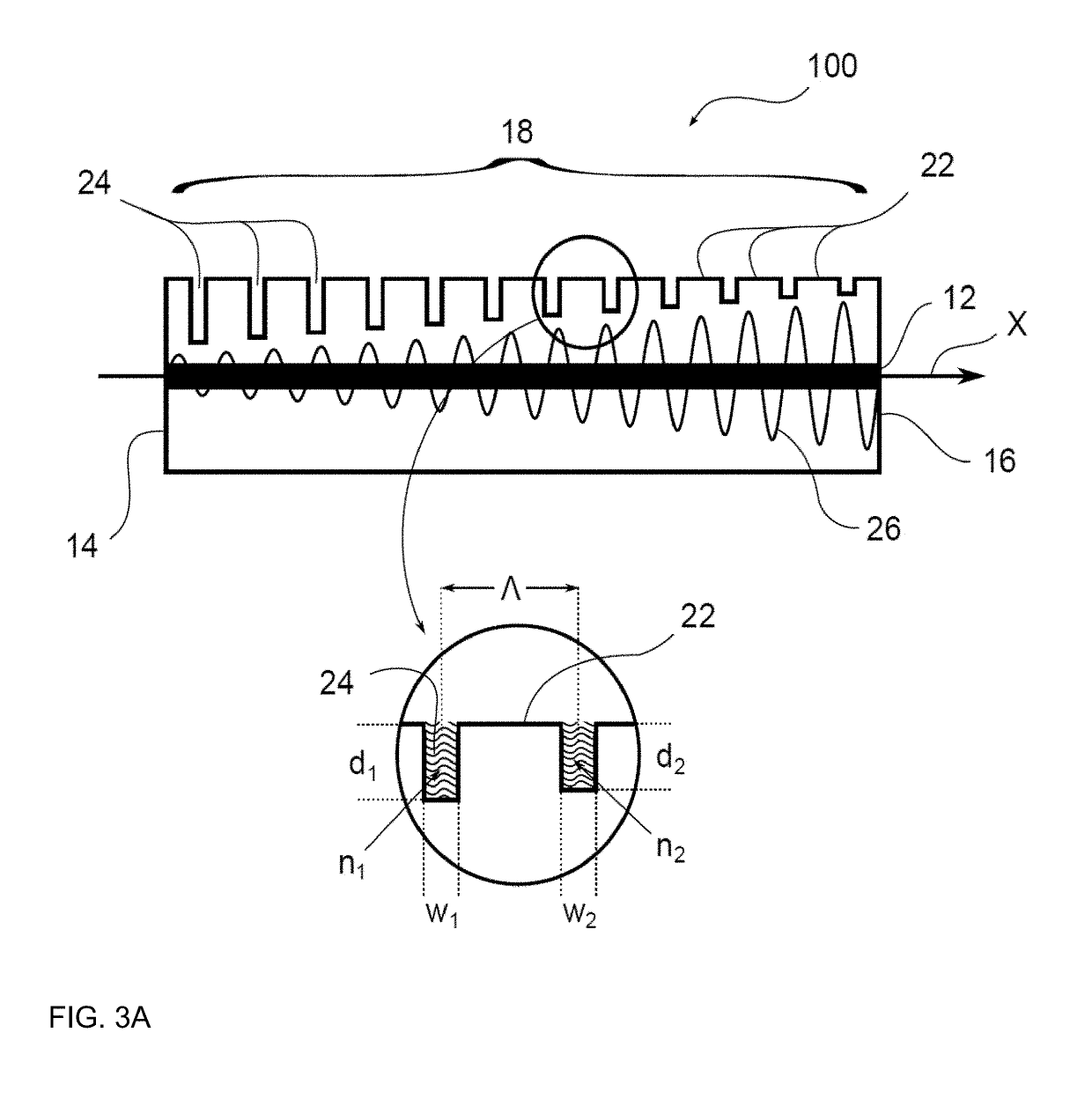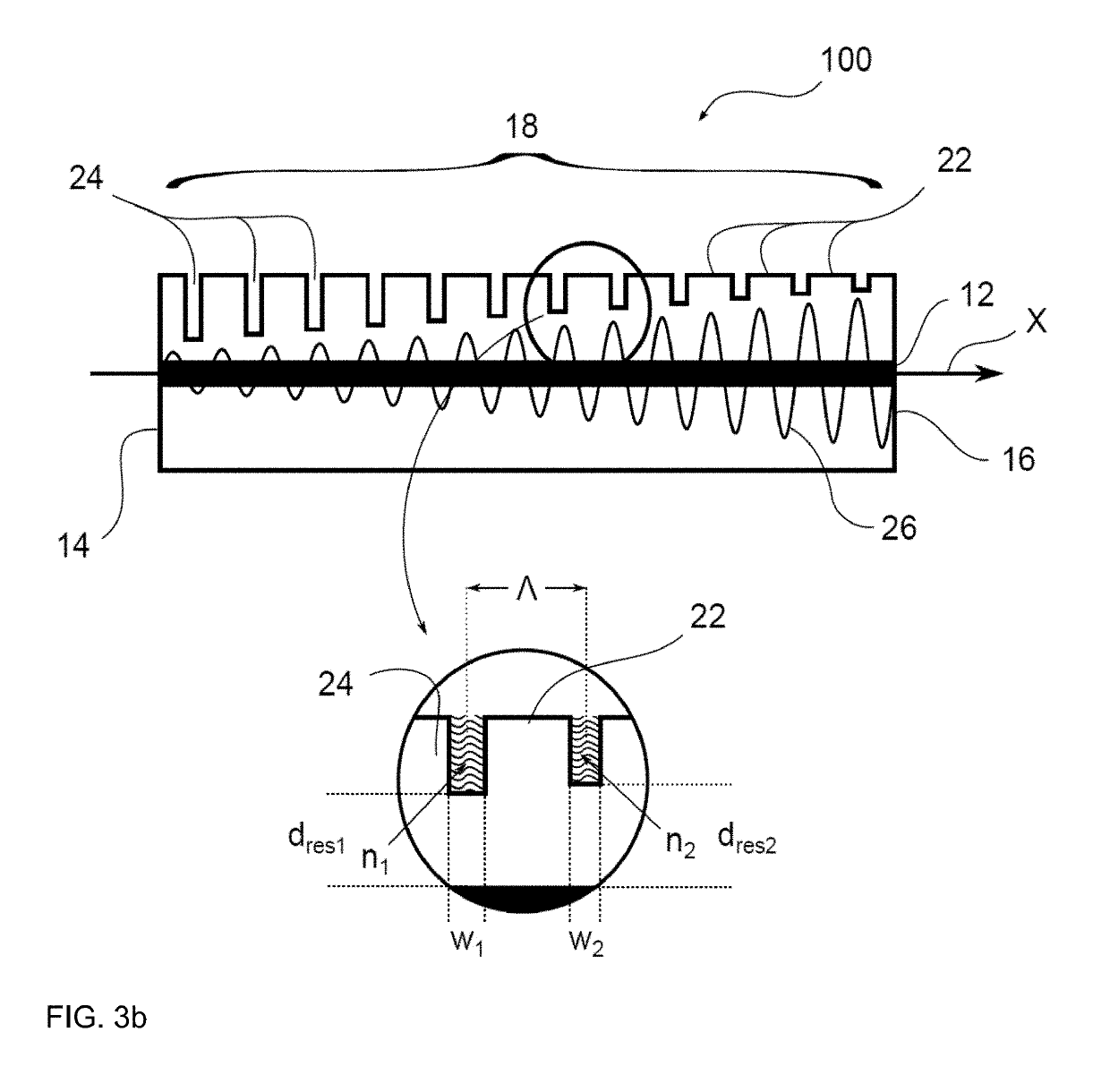Laser diode with distributed feedback and method for producing
a laser diode and feedback technology, applied in lasers, lasers, laser optical resonator construction, etc., can solve the problems of laser performance collapse, increase the optical loss within the resonator, reduce the efficiency of outcoupling, etc., to reduce the refractive index of the trenches, and reduce the depth of adjacent trenches.
- Summary
- Abstract
- Description
- Claims
- Application Information
AI Technical Summary
Benefits of technology
Problems solved by technology
Method used
Image
Examples
Embodiment Construction
[0061]FIG. 1 shows a spatially schematic representation of a laser diode 100 with distributed feedback according to the prior art. An active layer 10 is enclosed at the top and bottom by a directly adjacent waveguiding region 12. The generation and propagation of the laser radiation preferably takes place along a first axis X (simultaneously the optical axis). For this purpose, a second axis Y extends parallel to the active layer 10. The edges of the laser diode 100 pierced by the first axis X form a rear facet 14 and a front facet 16. In this case, the laser radiation generated in the laser diode 100 exits via the front facet 16. This can be provided with an additionally applied antireflection coating. The rear facet 14, however, is often provided with a mirror coating to suppress outcoupling. During operation of the laser diode, a wave 26 builds up between the front facet 16 and the rear facet 14, which is guided through the waveguiding region 12 along the first axis X. Within the...
PUM
 Login to View More
Login to View More Abstract
Description
Claims
Application Information
 Login to View More
Login to View More - R&D
- Intellectual Property
- Life Sciences
- Materials
- Tech Scout
- Unparalleled Data Quality
- Higher Quality Content
- 60% Fewer Hallucinations
Browse by: Latest US Patents, China's latest patents, Technical Efficacy Thesaurus, Application Domain, Technology Topic, Popular Technical Reports.
© 2025 PatSnap. All rights reserved.Legal|Privacy policy|Modern Slavery Act Transparency Statement|Sitemap|About US| Contact US: help@patsnap.com



